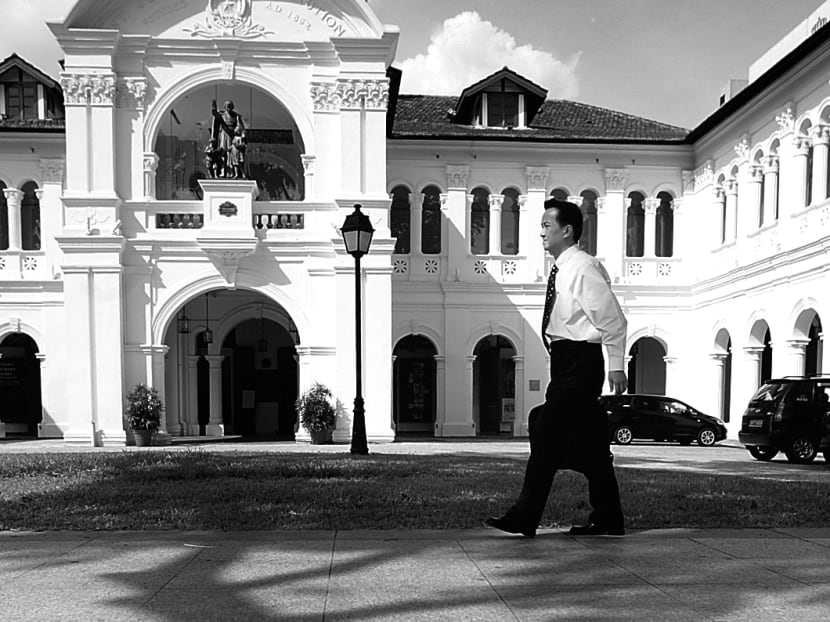What will make S’pore a world arts hub
Singapore’s art scene is a postmodern experiment, in that the Government has helped to jump-start it. And when the Government moves, it is at lightning speed.

The Republic has museums such as the Singapore Art Museum, but it is time to set up additional institutional infrastructure — another large international museum. TODAY file photo
Singapore’s art scene is a postmodern experiment, in that the Government has helped to jump-start it. And when the Government moves, it is at lightning speed.
In March last year, it announced that it would spend S$274 million over the next five years to develop arts and culture, and it has done a remarkable job of presenting art in a serious context, achieving something similar to what grew organically in New York City’s SoHo and Chelsea arts districts, and in the 678 district in Beijing.
The Affordable Art Fair and Art Stage Singapore are both established on the Singapore art calendar, as was ARTSingapore before them. There are more and more galleries and museums opening all the time, and that means more jobs for everyone. In 2005, Singapore counted 568 visual arts exhibitions over the year; this jumped to 999 in 2010.
In Asia, the buying and selling of contemporary art — which has a long tradition in the West — is a relatively recent phenomenon. Even so, Singapore, Tokyo, Seoul and Taipei now produce higher sales volumes than traditional marketplaces such as Paris, Berlin, Milan and Geneva, according to art information source Artprice. According to Artprice’s Art Market Trends 2011, Singapore posted 22 per cent growth in auction revenue for 2011.
AN EAST-WEST DIALOGUE
We were invited to start our gallery in Singapore not too long ago. We had opened our first gallery in New York in 2000, followed by locations in Beverly Hills and Hong Kong, and we are among the tiny percentage of galleries with multiple locations.
I always knew there was tremendous potential in Singapore, and I believed our global outlook would be a good match for such a diverse city. Our mission is to create dialogue — a multicultural, East-West dialogue. We developed that idea in 1999 before the term “globalisation” was even in circulation.
It was a natural outgrowth of my living in the West but coming from the East, and multiculturalism was my reality. I wanted to bring together a global community of artists, with the basis of intercultural exchange. That is what I felt globalisation was — that point of intersection where the energy exists.
The same energy exists in some of the art that our gallery represents — for example, the sound installations by Mr Taylor Kuffner. He takes a traditional Asian instrument — the gamelan — and tries to preserve it, but not in a static sense. He brings in robotic technology, so that a tradition-tension exists, and that is why it becomes interesting and unique.
With a large number of local and expat collectors, a powerful collector base is taking shape in the city. There is already a global community here, and now world-class artistic infrastructure as well in the form of Gillman Barracks, a cluster of international galleries which opened late last year.
By importing an international artistic presence and curatorial know-how, the bar for artistic presentation in Singapore has been raised. That is the power of having art galleries gathering together in a central hub; it is a rich resource that will ultimately draw people.
ANOTHER INTERNATIONAL MUSEUM?
Now that the Government has been doing its part, the local and international galleries must do their part.
A gallery is just bricks and mortar. It is what is inside that is important. Galleries must mount shows that have strong and interesting points of view and a narrative built around the art. They need to provoke thought and dialogue.
It is also time to set up additional institutional infrastructure — another large international museum, to build up a collection of significant cultural products. Singapore has the Asian Civilisations Museum, the National Museum, the Singapore Art Museum and the upcoming National Art Gallery. But world-class cities have not just a handful of museums of international importance, but dozens.
Now is the time to start looking for the right kind of people to activate it. Do you have creative people? Are they pushing the envelope? Art exists in creative ferment. It does not flourish in a corporate environment, so there must be will and space to support that.
The community must be supportive as well, and not just in the purchasing of art. Parents must be as willing to schedule family visits to Gillman Barracks as they would be to bring their children to watch the latest hit movie. They must say: “This is of value to us.”
It should be commonplace to have young students stopping by. The interest in the intellectual side of the story should be just as strong as the enthusiasm for popular culture.
When will Singapore be an international art hub? When people come from all over the world to look at the art here. Singapore is not yet part of the equation but can gain ground quickly if it makes the right decisions. It is definitely getting close to achieving this status, but everyone has to play his or her part.
Sundaram Tagore is the owner and curator of Sundaram Tagore Galleries in Singapore, Hong Kong and New York City.






